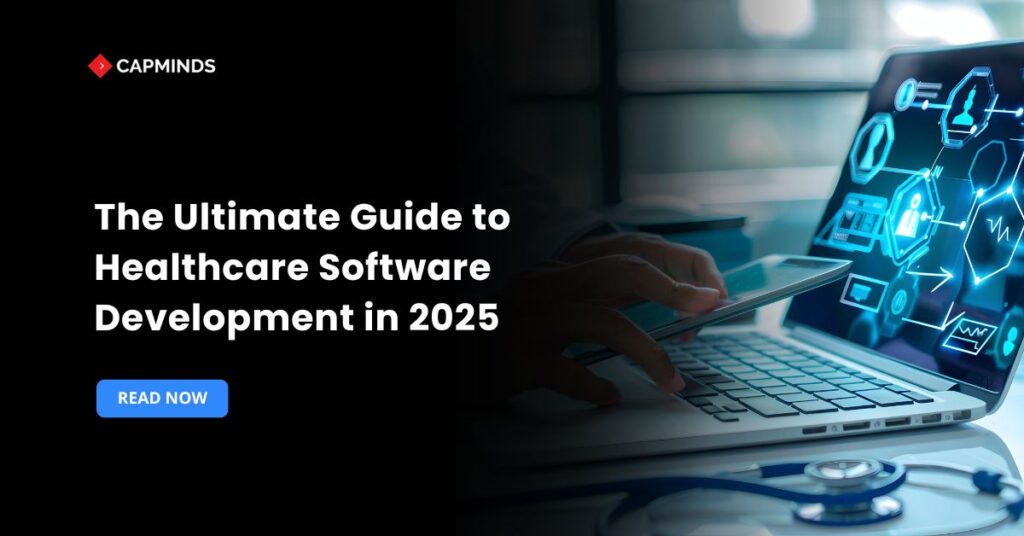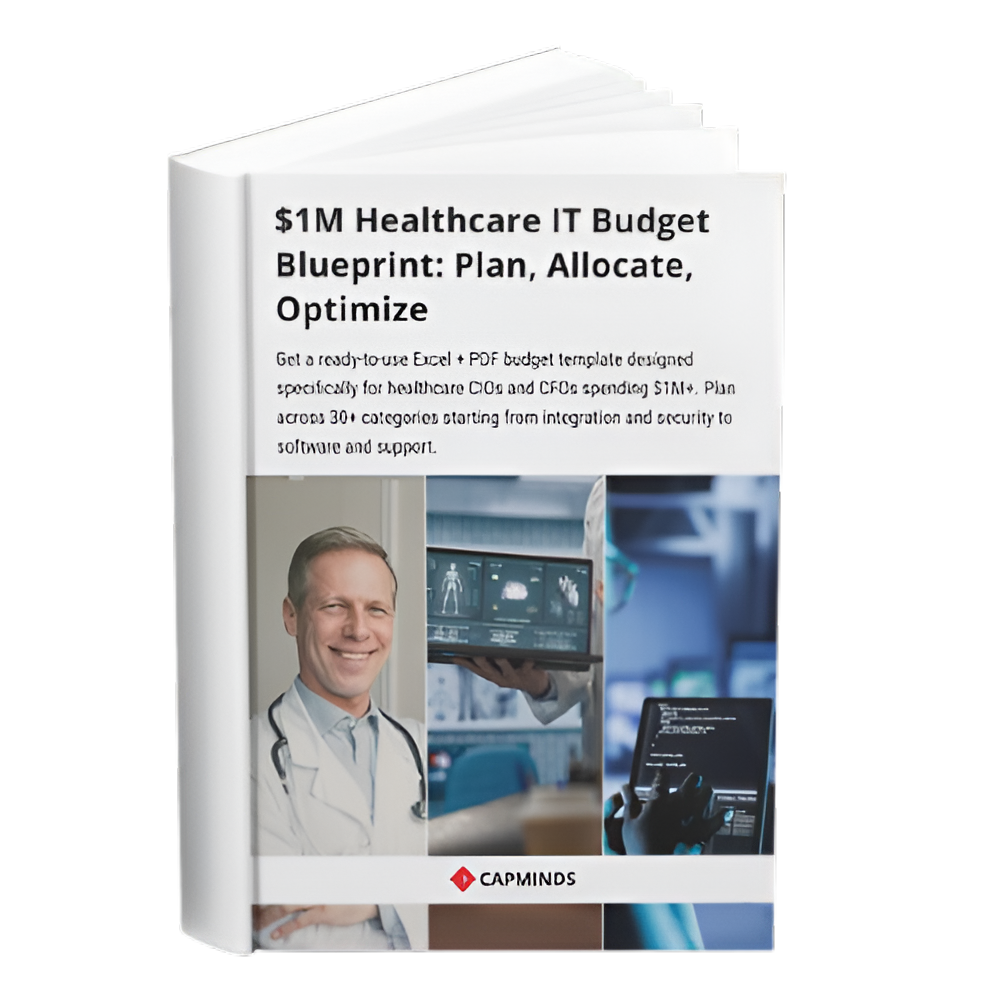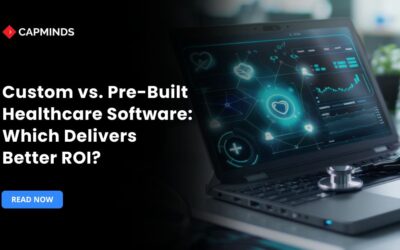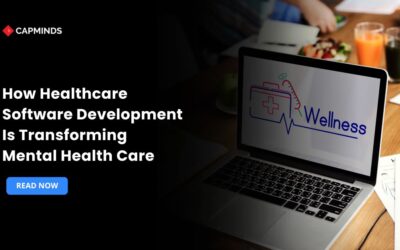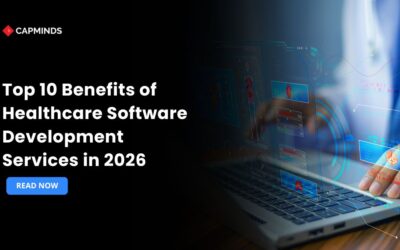The Ultimate Guide to Healthcare Software Development in 2025
Healthcare providers are struggling with administrative pressures and the need to ensure a high level of data security, and off-the-shelf generic software is not providing them with the customized, on-demand care that patients are seeking. This comprises patient care, slowing down the process, and physician burnout.
By collaborating with a custom healthcare software development company, you will be able to customize software to meet your unique requirements. This guide will give you a roadmap of how to come up with a compliant, hyper-efficient infrastructure for your healthcare practice.
What is Healthcare Software Development?
Healthcare software development is a specialized process that includes the creation, design, testing, and implementation of digital solutions in the healthcare industry that addresses the needs of medical, clinical, and administrative purposes.
It has essential components, such as patient safety, optimization of the clinical workflow, and good compliance with regulations, such as HIPAA, GDPR. It offers complex solutions ranging from EHR/EMR to patient-facing mobile applications to advanced AI-based diagnostic tools.
Medical software development involves converting the vast, complex, and delicate data of the healthcare sector into digital tools that are actionable, secure, and accessible.
Key Features of Medical Software Development
1. Security and Compliance
- Strong security measures that include end-to-end encryption (in transit and at rest), secure hosting, and role-based access controls of PHI.
- Following the procedures prescribed by HIPAA, GDPR, and similar laws to prevent legal issues and to increase patient confidence.
- Audit trails include a history of all activities and data insertions by a user in a format that can only be viewed by an authorized user to assist in security and compliance audits.
2. Interoperability and EHR/EMR Integration
- Interoperability with other healthcare systems such as EHR, Laboratory Information System and Picture Archiving and communication systems.
- Use of HIE standards such as HL7 and DICOM can be used to facilitate an easy integration of different platforms and devices.
- Centralized records to view the overall medical history, laboratory data, and medication prescriptions of a patient throughout their previous healthcare providers.
3. Automated Workflow and Productivity
- Practice management automates the administrative tasks such as scheduling appointments, patient registration, and handling waiting lists.
- Automated medical coding, including ICD-10 coding support and CPT coding support, insurance claim submission, and invoicing tools to increase financial efficiency
- Reminder alerts for clinical use to remind clinical staff of critical laboratory results, potential drug-drug interactions, or of upcoming patient appointments.
4. Remote Patient Monitoring and Telehealth
- Virtual consultations are a secure and integrated remote video conferencing service capable of remote diagnosis and treatment.
- Secure messaging communication between providers and patients via channels that are encrypted.
- Wearable integration with the medical devices and consumer wearables, such as IoMT, to constantly monitor patient vital signs and chronic condition parameters outside the clinical care environment.
5. User Experience and Patient Engagement
- An intuitive, easy-to-use interface for clinicians, reducing errors and physicians’ burnout, and patients can easily adopt it.
- Patient portals that will allow patients to use their medical records, make an appointment, and request prescription refills will be developed.
- Accessibility using mHealth apps to access healthcare anywhere, anytime, by making it mobile and fitting to mobile devices.
6. Clinical Decision Support Systems
- Evidence-based guidance is the use of medical information provided along with clinical guidelines and patient-specific data, helping to provide clinicians with relevant information at the point of care and in a timely manner.
- Predicting patient adverse event risk factors, potential outcomes such as hospital readmission, and aiding diagnosis and individualized treatment planning with the assistance of AI/ML.
Related: 7 Key Challenges in Healthcare SaaS Development (And How to Solve Them Efficiently)
Benefits of Custom Healthcare Software Development
1. Improved Patient Outcomes
Consolidation of data and direct access to information will enable clinicians to make timely and informed decisions to provide better care to patients.
2. Increase in Efficiency and Productivity
Tailored solutions will automate most of the administrative tasks, leaving the providers and nurses to specialize in patient care, which will drive a tremendous output gain to staff productivity and reduce burnout.
3. Better User Adoption
Specific programming to target the particular user, a front-desk administrator, or a patient, leads to an intuitive design, which lowers training costs.
4. Long-term Scale
It might need more money initially to purchase a custom solution, but its optimal adaptation to your workflow will save the expenses of workarounds, unneeded functionality, or even the cost of licensing multiple systems that run separately.
5. Competitive Advantage
Building a unique solution will provide your organization with a proprietary advantage, be it in engaging patients, data analysis, or in a specialized clinical service.
Healthcare Software Development Trends in 2025
1. Artificial Intelligence & Machine Learning Dominance
- AI is making its way from being a futuristic idea to a clinical requirement. Expect to see SaaS healthcare software development with a large amount of AI.
- Predicting risk of readmission for patients and efficient allocation of hospital resources. Helping with medical image analysis to detect anomalies earlier and more accurately
- Generative AI can be employed to automate medical transcription, documentation, and initial claims processing.
2. IoMT & Remote Patient Monitoring
Integrate seamlessly, which handles huge, real-time streams of data coming from various devices with powerful APIs. Use machine learning to filter data noise and provide timely, critical alerts of actions to care teams.
3. Hyper-Personalization and Patient Engagement
- Integrated portals and mobile applications to schedule appointments, have virtual visits and access medical records securely.
- High-end telemedicine platforms that involve video consultation in addition to distance diagnostics and prescription.
4. Blockchain Technology
- Creating an immutable and time-stamped record of patient data transactions to prevent unauthorized tampering of data.
- Promoting secure, cryptographically verifiable sharing of patient information from disparate healthcare networks.
CapMinds Healthcare Software Development Services
At CapMinds, we understand that one-size-fits-all technology doesn’t work in healthcare. That’s why we deliver end-to-end healthcare software development services designed to streamline workflows, enhance compliance, and elevate patient care.
Whether you’re a hospital, clinic, or health-tech startup, our solutions help you build a future-ready infrastructure.
Our core services include:
- Custom Healthcare Software Development – Tailored platforms that align with your practice’s unique needs.
- Medical Software Development Services – Custom and compliant EHR, EMR and patient-facing applications.
- Interoperability & EHR Integration – HL7, FHIR and DICOM interoperability to integrate health data.
- Telehealth & Remote Patient Monitoring – Secure video care, integration of IoMT devices and patient portals.
- Automation and AI in healthcare – Intelligent processes, analytics, and automated clinical documentation.
Collaborate with CapMinds to change your healthcare practice through scalable, compliant, and hyper-efficient digital health solutions.
